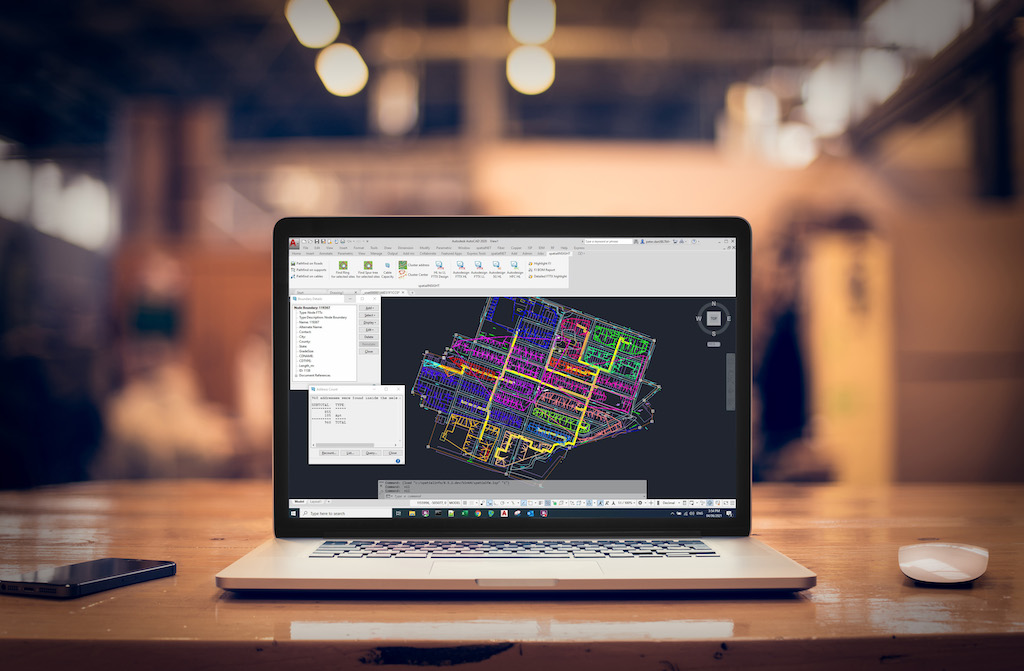Jeff Miller: Tools to Manage the Next-Generation Network Buildouts
Service providers that use GIS applications are able to reduce design time by 80 percent.

Today’s digital world is driving the insatiable need for fiber networks and connectivity, thus the thrust for widespread broadband buildouts and deployments worldwide. Broadband connectivity is the heartbeat for mobility, cloud applications, voice, video, and social media, not to mention home automation, IoT, and smart cities. As a result, service providers and operators are investing heavily in infrastructure, claiming their 5G networks are the largest or fastest or most reliable.
Initiatives like the Rural Digital Opportunity Fund are aimed at bridging the digital divide and fast-tracking investment to deploy high speed fixed broadband service to rural areas and small businesses that lack it. The Federal Communications Commission’s $20.4 billion program requires that networks stand the test of time by prioritizing higher network speeds and lower latency.
A key element in the implementation of RDOF-backed projects is broadband mapping. The Federal Communications Commission is in the process of updating its current broadband maps with more detailed and precise information on the availability of fixed and mobile broadband services. The Broadband Deployment Accuracy and Technological Availability Act, signed into law in March 2020, requires the FCC to change the way broadband data is collected, verified, and reported
As carriers build, expand, and upgrade their fiber network infrastructure, a great deal of planning is required, along with documenting the intricacies of design and engineering processes.

Streamlining and automating network planning and design processes through software can deliver accurate and timely network info for service providers, increase efficiency, and create opportunities for reducing costs.
GIS based systems are replacing volumes of paper, and outdated static CAD, Excel and Vizio files. They offer sophisticated tools to manage all aspects of network design and infrastructure management. Working with many service providers that use GIS applications, they are able to reduce design time by 80 percent and drastically cut other capital expenditures.
Automation is key
Having to rely on a system of manual processes to manage the fiber network makes it increasingly difficult to scale. Fortunately, with the introduction of automation into the network management process by utilizing an accurate physical network inventory in addition to geographic information system mapping, scalability becomes a much easier task.
Continuous planning and engineering tasks can ultimately become automated through software implementation. Automating network fiber management creates significant business value by shifting a service provider’s approach from reactive to proactive. A comprehensive and updated database for network architecture quickly allows for scenario analysis and capacity planning. Sharing automated processes across different organizations becomes much simpler and improves collaboration while reducing errors. This can allow staff to shift their focus to more pressing operational activities thus making the network more reliable.
Integration between different systems
Whether it is your enterprise GIS or outage monitoring system, it should be easy to interact with third-party systems to get the most out of the network data. Ideally, you should be able to receive an outage notification and use that location to track down the network and pinpoint the root cause to act and quickly resolve the situation before customers notice. This can help save time, money, and guarantee customer satisfaction.
Mobilize network data and increase field worker productivity
Utilizing a fiber networking and planning solution enables network information to be shared easily and quickly between the field and office to provide access to the information they need when they need it at any given time. Enterprise-wide access can provide timely and accurate network information for a wide range of communications service providers.
When it comes to service providers, expanded visibility into a network yields a greater overall awareness of the network. Automating third-party data exchange processes with accurate and up-to date inventory can optimize performance for field workers and guarantee customer satisfaction. Improved access to data can increase ROI by allowing cable locators and field techs to receive accurate confirmation before they arrive at a job. In the end, there will be fewer mistakes which ensures happier customers.
The right tools can result in improved scalability, reduced time to revenue, lower operational costs, and actionable insights that can be gleaned from network data.
Jeff Miller serves as President and CEO of Synchronoss Technologies. He previously served as President for IDEAL Industries Technology Group, following a 16-year experience with Motorola Mobility where he was Corporate Vice President of North America. Miller also serves on the Board of 1871, Chicago’s largest start-up incubator, and on the non-profit Boards of Aspire Chicago and Junior Achievement. This article is exclusive to Broadband Breakfast.
Broadband Breakfast accepts commentary from informed observers of the broadband scene. Please send pieces to commentary@breakfast.media. The views reflected in Expert Opinion pieces do not necessarily reflect the views of Broadband Breakfast and Breakfast Media LLC.










